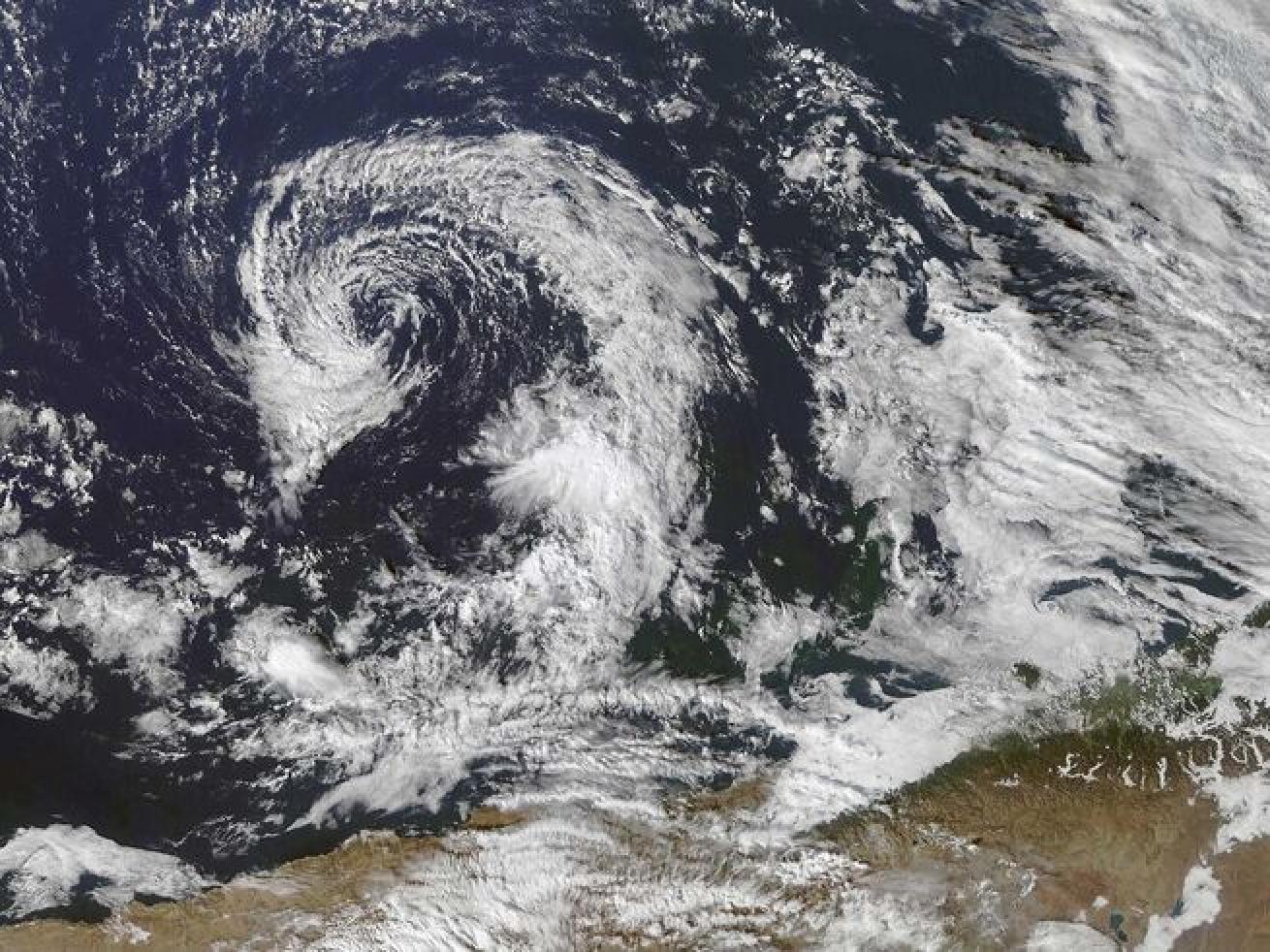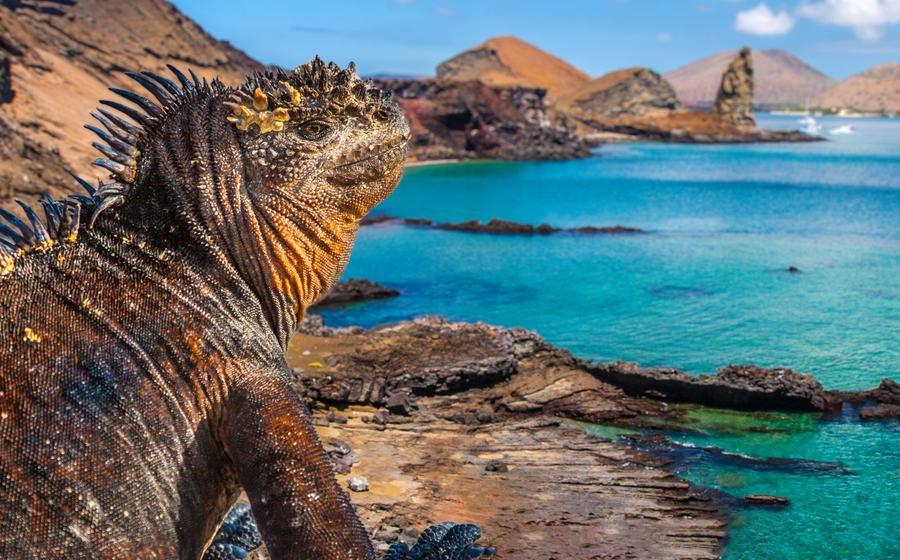What Happens to Ocean Creatures during a Hurricane?

Ethan Daniels/ShutterstockA coral reef has been destroyed by intense storm wave energy in Komodo National Park, Indonesia.
There is some evidence that fast-swimming fish such as sharks sense the falling barometric pressure associated with a hurricane and leave the area. Sharks have organs that work a little like the human inner ear. Called lateral lines, rows of small pores connected to a fluid-filled canal along each side of their bodies, these sensory receptors can feel pulses or vibrations in the water (this is how a shark detects the thrashing of wounded or sick prey). In 2001, a study of tagged juvenile blacktip sharks in Florida’s Terra Ceia Bay found that they responded to the approach of Tropical Storm Gabrielle by moving to deeper water. The study authors concluded that their movement was “triggered by a drop in barometric pressure associated with the approach of the storm … all blacktip sharks returned to the shallow nursery area after the storm’s passage, suggesting that this was an innate behavior.”
A study of sea kraits off Taiwan’s Orchid Island before and after typhoon Morakot found the sea snakes also have a unique sense for detecting movement underwater via small, elevated structures on the scales on their heads. After a census showed that their population numbers returned to pre-storm levels, researchers concluded that their “survival of sea kraits depends on the sensory perception of low pressures preceding a tropical cyclone” and that they “likely find refuge in cavernous spaces beneath volcanic rocks of the seacoast”.
“We have a lot to learn, but there is documentation of some larger, more mobile animals leaving coastal zones at the leading edge of a hurricane,” says Evan D’Allessandro, a lecturer in the Rosenstiel School of Marine and Atmospheric Science at the University of Miami. “But smaller, less mobile ones need to roll the dice, and many do not survive if conditions get bad enough.”
Related Reading: 6 Animal Encounters to Add to Your Bucket List

NASA Images/ShutterstockHurricane satellite image as seen from space.
“Sessile organisms like sponges, corals and sea anemones can get sand-blasted,” Curt Storlazzi, a geological oceanographer with the U.S. Geological Survey. “Some things are exhumed and some things are completely buried. And anything that’s broken loose starts banging around. It can be like a bull in a china shop.”
That’s because these storms create powerful wave action that can destroy fragile marine organisms and redistribute tons of sand, says Storlazzi. “In deep water, the water in waves is tumbling like logs rolling – this ‘orbital’ motion reaches down in the water column to a depth of about half their wavelength — the length between successive wave crests,” he explains. “If you have a 15-foot wave every 10 seconds in 30-meter [98 feet] water depth, that wave has a wave length of about 100 meters [328 feet]. Think about that — that’s the entire continental shelf. That results in a lot of force on the seabed in the depth range where most coral reefs are found [less than 100 feet]. There’s significant motion, like a very strong undertow. Those forces can snap corals and negatively impact infrastructure such as artificial reefs.”
“Loose coral heads and other debris that’s picked up during these storms are tossed around like bowling balls, further damaging other corals and reef associated species,” says Jennifer Koss, director of NOAA’s coral reef conservation program. The corals often get ripped apart and a huge amount of sediment can smother them. “Corals are particularly vulnerable to disease after a large storm event because they have to put significant amounts of energy into recovering,” explains Koss. “Much like a person is more susceptible to disease when their immune systems are compromised due to inadequate sleep and nutrition, the immune system of a reef is compromised after a powerful storm. Recovery can happen relatively quickly — on the order of a few years to maybe a decade or so. However, the more degraded the coral reef ecosystem, the longer the road is to recovery — again, much like humans. If your general health is good, you are far more likely to recover from an injury quickly than if you are battling something else that’s lowering your resistance and compromising your immune system.”










